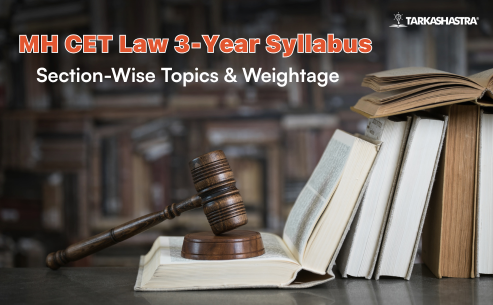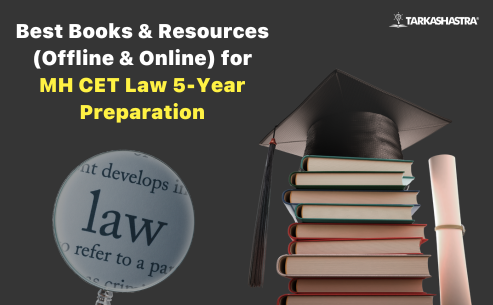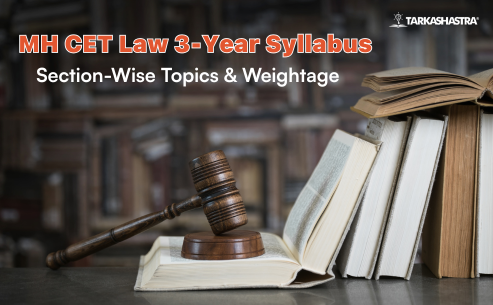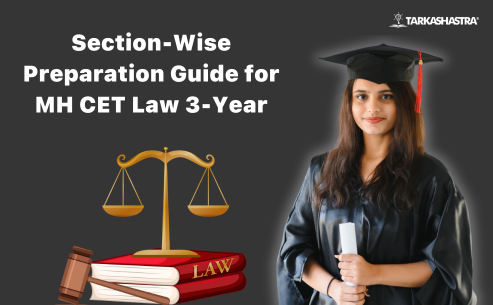If you’re a law graduate aiming for an LLM from India’s top National Law Universities (NLUs), the CLAT PG (LLM) entrance exam is your gateway. Conducted by the Consortium of National Law Universities, this exam tests your understanding of key legal subjects—not through rote learning but through comprehension-based application of core legal concepts.
Unlike the undergraduate CLAT, which includes General Knowledge, English, and Logical Reasoning, the CLAT LLM exam focuses exclusively on law subjects you’ve studied during your 3-year or 5-year LLB course. That means Constitutional Law, Jurisprudence, Criminal Law, and more.
But here’s the catch: not all topics are equally important, and the exam doesn’t follow a fixed weightage every year. That’s why understanding the exact syllabus, essential topics, marking scheme, and best preparation resources is critical.
Why This Blog Is a Must-Read
In this guide, we’ll decode:
- The official CLAT PG syllabus and exam pattern
- The most important topics and their expected weightage
- The best books for each subject
- Tips for mastering comprehension-based MCQs
- FAQs that every aspirant needs answered
Whether you’re just beginning your prep or already deep into mock tests, this blog will act as your strategic roadmap to maximize your score and secure that NLU LLM seat.
Let’s begin by understanding the exam overview in the next section.
CLAT LLM 2026 Exam Overview
Before diving into the syllabus and preparation strategies, it’s crucial to understand the structure of the CLAT PG 2026 exam. Conducted annually by the Consortium of National Law Universities, this exam opens doors to LLM programs offered by 21 NLUs across India.
The CLAT PG is not your typical law exam. It’s designed to test your ability to comprehend, analyze, and apply core legal principles in a time-bound scenario—ideal for those planning to pursue specialization or academic careers in law.
At a Glance: CLAT LLM 2026 Exam Details
| Feature | Details |
| Exam Name | CLAT PG / CLAT LLM Entrance Exam |
| Conducting Body | Consortium of National Law Universities (NLUs) |
| Courses Offered | LLM (Postgraduate in Law) |
| Mode of Exam | Offline (Pen & Paper) |
| Type of Questions | Comprehension-based Objective MCQs |
| Total Questions | 120 |
| Total Marks | 120 |
| Duration | 2 Hours (120 Minutes) |
| Negative Marking | Yes (–0.25 for each wrong answer) |
| Language | English Only |
| Eligibility | Candidates must have an LLB degree or equivalent from a recognized university. |
Admission via CLAT PG Score
NLUs use your CLAT LLM score to:
- Shortlist candidates for LLM admissions
- Evaluate understanding of UG-level law concepts
- Rank merit lists based on raw score and preferences
The next step? Understanding how these 120 questions are structured, which we’ll cover in the exam pattern section next.
CLAT PG 2026 Exam Pattern
The CLAT LLM (PG) exam is not a memory test—it’s a thinking test.
The 2026 CLAT PG exam pattern has been designed to evaluate how well you can comprehend, analyze, and apply legal concepts in real-world situations. All questions are comprehension-based multiple-choice questions (MCQs) that require intense conceptual clarity and legal reasoning skills.
Unlike traditional exams, the CLAT PG avoids direct theoretical questions. Instead, it presents you with passages drawn from critical court judgments, landmark statutes, academic articles, and recent legal developments, followed by questions that test your grasp of legal interpretation and application.
Key Highlights of CLAT PG 2026 Pattern
| Feature | Description |
| Mode of Exam | Offline (Pen-and-Paper Based) |
| Type of Questions | Comprehension-based Objective MCQs |
| Total Questions | 120 |
| Total Marks | 120 |
| Duration | 2 Hours (120 Minutes) |
| Marking Scheme | +1 for every correct answer–0.25 for every incorrect answer |
| Medium of Exam | English Only |
| Passage-Based Format | Each passage followed by 6–8 questions testing reasoning, judgment analysis |
What Do the Questions Look Like?
Each comprehension passage (approx. 400–450 words) is based on topics from:
- Constitutional Law
- Jurisprudence
- Criminal Law
- Contract, Torts, International Law, etc.
You will be tested on:
- Legal Reasoning: Apply legal principles to the facts presented.
- Inference Making: Understand implied meanings and policy implications.
- Interpretation: Decode the intent of a judgment or statute.
- Argument Evaluation: Assess the strength or weakness of legal arguments.
This Format ensures that only those with genuine legal understanding—not rote knowledge—succeed.
Strategy Tip:
Don’t just “read” law. Think through it. Practice with real judgments and develop a habit of reading between the lines. Comprehension + Conceptual Clarity = Success in CLAT PG.
CLAT LLM 2026 Syllabus – Core Subjects & Weightage
The CLAT PG 2026 syllabus is a refined version of the foundational subjects you’ve studied during your LLB. The exam doesn’t test your ability to recall bare acts, but rather your ability to interpret, analyze, and apply them in context.
Objective-type multiple-choice questions will follow each passage. A total of 22–24 passages are expected, followed by 120 MCQs.
Questions are built around comprehension passages derived from judgments, constitutional texts, statutes, scholarly writings, and policy papers. So, knowing the subjects deeply—and not just superficially—is the real key.
Let’s explore each subject in detail and its importance.
1. Constitutional Law
- Basic & Salient Features of the Indian Constitution
- History and Preamble
- Citizenship, Doctrine of Basic Structure
- Fundamental Rights (Articles 12–30), DPSPs, and Fundamental Duties
- Important Amendments and Constitutional Remedies
- Supreme Court, Ordinance Power, Parliament, Services under Union and State
- Emergency Provisions
- Trade, Commerce, and Intercourse
- Executive, Amendment Power, Committees, and Commissions
- Anti-Defection Law, Center-State Relations, Scheduled Areas
- Article 300A, Article 370
2. Law of Torts
- General Principles, Origin and Scope of Tort Law
- Damnum Sine Injuria and Injuria Sine Damnum
- Tortious Liability and Defenses
- Joint and Several Tortfeasors
- Statutory Authority, Consent (Volenti Non Fit Injuria)
- Specific Torts, Strict and Absolute Liability
- Vicarious Liability, Nuisance, Defamation, Negligence
- Consumer Protection
- Act of God, Private Defence
- Joint vs Independent Tortfeasors
3. Criminal Law
- Elements of Crime, Actus Reus and Mens Rea
- Group Liability, Abetment, Criminal Conspiracy
- Attempt and Exceptions
- Offenses Against the Body – Murder, Culpable Homicide, Hurt, Assault, Kidnapping, Rape, etc.
- Offenses Against Public Tranquillity
- Unnatural Offenses, Wrongful Restraint, Wrongful Confinement, Criminal Force
4. Jurisprudence
- Nature and Scope of Jurisprudence
- Sources and Schools of Law
- Rights and Duties, Power-Liability Relationships
- Theories of Punishment, Ownership & Possession
- Person and Liabilities
- Morals, Contemporary Jurists & Concepts
- Hohfeld’s Legal Relation, Jural Analysis
5. Law of Contracts
- Formation and Essentials of a Contract
- Offer, Acceptance, Consideration, Consent
- Capacity to Contract, Privity of Contract
- Vitiating Elements – Coercion, Undue Influence, etc.
- Quasi Contract, Contingent & Wagering Contracts
- Breach of Contract and Remedies
- Specific Contracts – Bailment, Pledge, Indemnity, Guarantee, Agency
- Force Majeure and Doctrine of Frustration
6. Administrative Law
- Meaning, Scope, and Significance of Administrative Law
- Rule of Law, Administrative Actions & Classifications
- Natural Justice – Meaning, Statutory Provisions, and Principles
- Delegated Legislation and Its Control
- Administrative Discretion and Adjudication
- Liability of Administration, Remedies
- Doctrines – Estoppel, Quasi-Judicial Directions
- Emerging Trends and Relationship with Constitutional Law
7. Intellectual Property Rights (IPR)
- Nature, Definition, and Scope of IPR
- Copyright Act 1957, Patents Act 1970, Trademarks Act 1999
- IPR in International Perspective
8. Environmental Law
- Water (Prevention and Control of Pollution) Act, 1974
- Air (Prevention and Control of Pollution) Act, 1981
- Environment (Protection) Act, 1986
- National Green Tribunal Act, 2010; Environment Tribunal Act, 1995
- Indian Forest Act, 1927; Forest Conservation Act, 1980
- Wildlife (Protection) Act, 1972
- Public Liability Insurance Act, 1991
- Forest Rights Act, 2006 (ST & OTFDs)
- International Environmental Law
9. Labour & Industrial Law
- Industrial Relations and Codes (2020)
- Code on Social Security, Code on Wages, OSHWC Code
- Industrial Disputes Act, Factories Act, Standing Orders Act
- Leading Case Laws and Recent Amendments
10. Public International Law
- Sources and Scope of International Law
- Municipal vs International Law
- Treaties and International Organisations
- State Recognition, Succession
- Human Rights and International Law
- Law of the Sea, Air, and Outer Space
- Dispute Resolution Mechanisms
11. Property Law
- Types of Property: Sale, Lease, Mortgage, Exchange
- Gift, Will, Actionable Claims
- General Principles and Applicability
12. Family Law
- Judicial Separation, Divorce, Maintenance
- (under both Hindu and Muslim Law)
13. Company Law
- Companies Act Overview
- Doctrines under the Companies Act, 2013
- Directors ‘ Shareholder Meetings
- Listing/Delisting of Shares, Winding Up
- Assessment-Based Questions
14. Taxation Law
- Income Tax Law – Basics, Residential Status
- Income from Salary, House Property, Business & Profession
- Exempt Incomes
- Indirect Tax Structure
- GST & Recent Amendments
CLAT PG Exam Pattern 2026 – Subject-Wise Weightage
Understanding the subject-wise weightage is essential for success in the CLAT PG Exam. Below is a detailed overview of the weightage for the CLAT PG Paper Pattern 2025.
| Section | Subjects | Weightage (%) |
| Section 1 | Constitutional Law | 50% |
| Section 2 | Other Law Subjects (Contract, Torts, Criminal Law, International Law, IPR, Jurisprudence) | 50% |
| Total | 100% |
Note: Although the total appears as 120%, this indicates the relative distribution across multiple sets of passages, not individual question percentages.
Constitutional Law:
- The Constitutional Law section is the most significant component of the CLAT PG exam pattern for 2026, forming the core focus of the exam. A substantial portion of the questions will be centered on this subject.
- Given its importance, dedicated preparation time should be allocated to mastering key topics such as Fundamental Rights, Directive Principles of State Policy, and Emergency Provisions.
- Historical trends, where approximately 60% of the questions have been based on Constitutional Law, emphasize the need to prioritize this area in your study plan.
Other Law Subjects:
- While Constitutional Law is the primary focus, the remaining portion of the exam is distributed across other key subjects like Jurisprudence, Torts, Criminal Law, and others.
- Once you have a strong understanding of Constitutional Law, it is equally important to prepare for these areas strategically. For example, if Contract Law and Torts collectively account for 30% of the exam, ensure proficiency in these subjects as well.
- Analyzing previous years’ question papers will provide valuable insight into the distribution of weightage, helping you effectively prioritize your preparation efforts.
Subject-Wise Weightage Overview (Expected)
| Subject Area | Expected Questions |
| Constitutional Law | |
| Jurisprudence | |
| Criminal Law | |
| Contract Law | |
| Torts | |
| International Law | |
| Administrative Law | |
| Environmental Law | |
| Family Law (Occasional) |
Note: The actual distribution may vary year to year.
Pro Tip: Instead of trying to memorize everything, focus on 6–7 core subjects, read landmark judgments, and understand how principles are applied.
Subject-Specific Guidelines
1. Constitutional Law:
- Focus on the framing, key features, and executive powers outlined in the Indian Constitution.
- Study the structure and jurisdiction of the judiciary, with particular emphasis on the Supreme Court.
- Gain a thorough understanding of legislative procedures, privileges, and the principles of cooperative federalism.
- Examine how emergencies impact center-state relations and analyze the provisions for freedom of interstate trade and commerce.
2. Criminal Law:
- Develop a clear understanding of the fundamental elements of a crime, including Actus Reus and Mens Rea.
- Study concepts like group liability, abetment, and criminal conspiracy.
- Please pay close attention to offenses against the body, such as homicide, murder, and assault, while distinguishing between them.
3. Torts:
- Categorize and analyze various torts, such as trespass, defamation, and nuisance.
- Study liability for misstatements and delve into the concept of recklessness within the scope of torts.
4. Contracts:
- Build a strong understanding of contract formation, validity, discharge, and performance.
- Review the provisions of the Indian Contract Act, 1872, and the Indian Specific Relief Act, 1963, for comprehensive coverage.
5. International Law:
- Examine the origin, definition, and evolution of international law.
- Understand key concepts such as state jurisdiction, nationality, and jurisdictional immunity.
- Study the role of the United Nations in resolving international disputes, along with the law of treaties and the principles governing war.
6. Jurisprudence:
- Familiarize yourself with the Indian legal system and legal methodologies.
- Study major legal theories, including analytical positivism, Kelsen’s pure theory of law, and Hart’s definition of law.
Best Books for CLAT LLM 2026 Preparation
CLAT PG doesn’t test how many books you’ve read—it tests how well you’ve understood what you read.
To excel in CLAT LLM 2026, aspirants need a focused list of books that offer clarity, case law references, and application-based understanding. Here’s a subject-wise guide to the best books and resources that balance concept clarity with legal reasoning.
Subject-Wise Best Books
| Subject | Recommended Books & Authors |
| Constitutional Law | – Indian Constitutional Law by M.P. Jain – Introduction to the Constitution of India by D.D. Basu |
| Jurisprudence | – Jurisprudence by V.D. Mahajan – Legal Theory by W. Friedmann |
| Criminal Law | – Indian Penal Code by Ratanlal & Dhirajlal – Criminal Law by K.D. Gaur |
| Law of Contracts | – Law of Contract by Avtar Singh – Pollock & Mulla on Contract Act |
| Torts | – Law of Torts by R.K. Bangia – The Law of Torts by Ratanlal & Dhirajlal |
| Administrative Law | – Administrative Law by I.P. Massey – Principles of Administrative Law by M.P. Jain |
| International Law | – International Law and Human Rights by S.K. Kapoor – Public International Law by V.K. Ahuja |
| Environmental Law | – Environmental Law by P. Leelakrishnan – Legal Control of Environmental Pollution by S.C. Shastri |
| Family Law | – Modern Hindu Law by Paras Diwan – Muslim Law in India and Abroad by Tahir Mahmood |
| IPR (Optional) | – Law Relating to Intellectual Property Rights by V.K. Ahuja |
| Labour & Industrial Law | – Industrial and Labour Laws by S.N. Mishra |
| Property Law | – Property Law by G.P. Tripathi |
| Company Law | – Company Law by Avtar Singh – Guide to Companies Act by Ramaiya |
| Taxation Law | – Direct Taxes Law & Practice by Vinod K. Singhania (for basics only) |
Additional Resources
- Universal’s Guide to LLM Entrance Exams – One-stop reference for past years’ questions, model tests, and subject briefs.
- LexisNexis CLAT PG Companion – Updated with recent case laws and topic summaries.
- Online Legal Databases – SCC Online, Manupatra, LiveLaw (for case summaries and recent developments).
Pro Tip:
You don’t need to buy every book—choose 1–2 per subject and go deep. Focus on comprehension, not just completion.
Also, stay updated with current case laws from SC/HC judgments that relate to constitutional, criminal, or administrative matters. These are often converted into passage-based questions.
CLAT LLM 2026 Marking Scheme
Understanding the marking scheme is essential for devising a strategy for attempting the CLAT PG exam. Every mark counts—and so does every wrong answer.
The CLAT LLM 2026 exam follows a negative marking system, which makes smart question selection and accuracy more important than blind attempts.
Detailed Marking Scheme
| Criteria | Details |
| Total Questions | 120 |
| Total Marks | 120 |
| Marks per Correct Answer | +1 |
| Negative Marking | –0.25 for every incorrect answer |
| Unattempted Questions | No marks awarded or deducted |
Key Takeaways
- Accuracy is Everything: A wrong answer can cost you more than just one mark—it can affect your rank.
- Blind Guessing = Risky: Unless you can eliminate at least two options, avoid guesswork.
- Mock Test Analysis: Track your net score, not just raw attempts, to understand your actual standing.
- Attempt Strategy: Aim to confidently attempt 85–100 questions based on your prep and mock test performance.
Example Calculation
Suppose you attempt 100 questions:
- Correct: 80 → 80 marks
- Incorrect: 20 → (–0.25 × 20) = –5 marks
- Net Score = 80 – 5 = 75 marks
In a competitive exam like CLAT PG, that 5-mark penalty can be the difference between NALSAR and ‘next year again’.
Pro Tip: Focus on maximizing accuracy, not just attempts. Quality > quantity. Use the process of elimination to reduce negative marks.
Preparation Tips for CLAT PG Aspirants
Preparing for CLAT LLM 2026 isn’t just about reading law—it’s about thinking like a lawyer.
Since the exam is comprehension-based, your preparation strategy should combine conceptual clarity with legal interpretation. Here’s how to prepare smartly, not just hard.
1. Focus on Core Subjects First
Instead of spreading yourself too thin, pick 6–7 high-weightage subjects (like Constitutional Law, Jurisprudence, Criminal Law) and master them.
Depth > Breadth. Don’t study 14 subjects half-heartedly. Study 7–8 really well.
2. Read Landmark Judgments
Most comprehension passages are based on landmark or recent Supreme Court judgments. Make a habit of reading case briefs, not full cases.
Sources: LiveLaw, SCC Online, Bar & Bench
3. Practice Comprehension-Based MCQs
CLAT PG isn’t a memory test. It’s an application test. Practice:
- Passage-based MCQs
- Interpretation & Inference questions
- Legal principle-based problem solving
4. Attempt Previous Year Papers
Analyze papers from CLAT PG 2021 to 2025. Focus on:
- Type of passages
- Subject distribution
- Pattern of legal reasoning
5. Take Full-Length Mock Tests
Simulate real exam conditions. After every mock:
- Review accuracy vs guesswork
- Analyze time spent per section
- Focus on why you got questions wrong
6. Join a Guided Mentorship Program
Self-study is powerful, but legal comprehension improves drastically with feedback. Join structured programs that offer:
- Doubt resolution
- Case law discussion
- Subject prioritization
- Personal guidance (like Tarkashastra’s PG Mentorship)
7. Make Your Notes
Summarize complex topics in your own words. Maintain:
- Case brief books
- Concept registers
- Legal term glossary
Final Tip: Consistency > Intensity
2 focused hours every day for 6 months > 10 random hours in a panic-mode December.
CLAT UG vs CLAT PG – Key Differences
While both exams fall under the CLAT umbrella, CLAT UG and CLAT PG are fundamentally different in their structure, purpose, subjects tested, and skills required.
If you’re coming from the CLAT UG journey or comparing the two, here’s how they stack up:
Comparison Table: CLAT UG vs CLAT PG
| Feature | CLAT UG (BA LLB) | CLAT PG (LLM) |
| Eligibility | 12th Pass (or appearing) | LLB Degree (3-year or 5-year integrated) |
| Purpose | Admission to UG Law Programs | Admission to Postgraduate LLM Programs |
| Subjects Tested | English, GK, Legal Reasoning, Logical Reasoning, Quantitative Techniques | Core Law Subjects from LLB (e.g., Constitution, Jurisprudence, Contracts, IPC) |
| Type of Questions | MCQs based on reading comprehension + reasoning | Comprehension-based MCQs from legal texts/judgments |
| Total Questions | 120 | 120 |
| Exam Duration | 2 hours | 2 hours |
| Marking Scheme | +1 for correct, –0.25 for wrong | +1 for correct, –0.25 for wrong |
| Difficulty Level | Aptitude + Legal Awareness | Conceptual + Legal Interpretation |
| Passage Source | Newspapers, general texts, legal snippets | Case law, academic articles, legal documents |
| Analytical Focus | Speed + Accuracy | Depth + Application |
Key Insight:
- CLAT UG tests whether you can study law.
- CLAT PG tests whether you understand the law.
They serve different audiences and different purposes—one begins your legal journey, and the other specializes in it.
Conclusion: Crack CLAT PG with Strategy, Not Stress
CLAT LLM 2026 isn’t just a test of memory—it’s a test of comprehension, clarity, and legal reasoning. The difference between selection and rejection often lies in how well you understand what’s important and how to prepare for it.
So, what should your next steps be?
- Know your syllabus inside-out (not just the subject list, but the exact topics and case laws)
- Pick your top 6–8 subjects and master them
- Practice legal comprehension regularly, not just reading bare acts
- Track your progress with mock tests and analyze what went wrong
Remember: It’s not about studying everything—it’s about learning the right things in the right way.
Want to Maximize Your CLAT LLM 2026 Score?
Join Tarkashastra’s Personalized CLAT PG Mentorship Program, where top mentors guide you through:
- Subject-wise strategy
- Passage-solving techniques
- Mock test feedback
- One-on-one doubt solving
- Updates on recent judgments and legal developments
Whether you aim for NALSAR, NLSIU, or NUJS, the strategy begins here.
Start Your Prep with Experts Today: Visit Tarkashastra.co.in
FAQs on CLAT LLM 2026 Syllabus & Exam Pattern
1. What is the syllabus for CLAT LLM 2026?
The CLAT PG syllabus covers core subjects from the LLB curriculum, such as Constitutional Law, Jurisprudence, Criminal Law, Contract Law, Torts, Administrative Law, International Law, Environmental Law, and others. The questions are passage-based, testing your ability to comprehend and apply legal concepts.
2. Is the CLAT PG exam subjective or objective?
CLAT LLM 2026 is an entirely objective test, consisting of 120 comprehension-based multiple-choice questions (MCQs). There are no essay-type or descriptive questions.
3. How many questions are asked in the CLAT LLM exam?
A total of 120 MCQs are asked in the exam, usually distributed across 20–24 comprehension passages based on core law subjects and recent legal developments.
4. Is there negative marking in CLAT LLM 2026?
Yes, 0.25 marks are deducted for each incorrect answer. It’s essential to avoid random guessing and only attempt questions where you’re reasonably confident.
5. What is the exam duration for CLAT PG?
The CLAT PG exam is conducted for 2 hours (120 minutes). You’ll need to manage time efficiently across all 120 MCQs derived from legal passages.
6. What type of passages are asked in CLAT PG?
Passages are sourced from Supreme Court judgments, legal articles, constitutional provisions, and academic commentary. These test your ability to interpret, infer, and apply legal reasoning.
7. Are bare acts enough to prepare for CLAT PG?
Bare acts are applicable for definitions and fundamentals, but are insufficient on their own. You must also study case laws, legal theory, and recent developments to perform well in comprehension-based questions.
8. Which subjects carry the highest weightage in CLAT PG?
Constitutional Law and Jurisprudence usually carry the highest number of questions, followed by Criminal Law, Contract, and Torts. These form the bulk of the paper and should be prioritized in your preparation.
9. Is current affairs or general knowledge part of the CLAT PG exam?
No, CLAT PG does not have a separate GK section. However, recent legal developments or judgments may form the basis of some comprehension passages.
10. What is the eligibility for CLAT LLM 2026?
You must hold a 3-year or 5-year LLB degree (or be in the final year) from a recognized university. There’s no age limit, but minimum qualifying marks (typically 50% for general and 45% for reserved categories) may apply.
11. Is CLAT PG tougher than CLAT UG?
Yes, CLAT PG is considered more difficult as it focuses on in-depth legal concepts, interpretation of law, and application. It’s designed for law graduates and expects familiarity with landmark cases and legal theory.
12. Do I need coaching for CLAT LLM?
Coaching is not mandatory, but mentorship or guided programs can help you structure your preparation, improve comprehension, and receive feedback, especially helpful if you’re preparing alongside a job or internship.
13. Is there any age limit for CLAT PG?
No, there is no upper age limit for appearing in CLAT LLM 2026. Anyone with a qualifying law degree can apply, regardless of their age.
14. Are previous year question papers available for CLAT PG?
Yes, you can find previous year papers on the official CLAT Consortium website and in commercial preparation books like Universal’s Guide. Solving them gives you insight into question patterns and difficulty level.
15. Are subjective answers reintroduced in CLAT PG 2026?
No. The subjective section was discontinued after CLAT PG 2020. CLAT PG 2026 will be completely objective, with only comprehension-based MCQs.
16. How many NLUs offer admission through CLAT PG?
As of now, 21 National Law Universities (NLUs) participate in CLAT PG for LLM admissions. However, NLU Delhi conducts its separate exam, AILET PG.
17. What is a good score in CLAT PG for top NLUs?
A score of 85+ is usually competitive for top NLUs like NALSAR, NLSIU, and WBNUJS. However, cut-offs vary each year depending on paper difficulty and the number of test-takers.
18. Do I need to prepare all 14–15 subjects for CLAT PG?
Not necessarily. It’s smarter to focus on 6–8 high-weightage subjects like Constitution, Jurisprudence, Contracts, Criminal Law, and Torts. A deep understanding of key subjects matters more than shallow coverage of all.
19. Can I take CLAT PG while still in the final year of LLB?
Yes. Final-year LLB students are eligible to appear for CLAT PG. However, you’ll need to submit proof of passing your law degree at the time of NLU admission.
20. Can foreign LLB graduates apply for CLAT LLM?
Yes, provided the law degree is recognized by the Bar Council of India or the NLU you’re applying to. Verification and equivalency may be required during the admission process.







